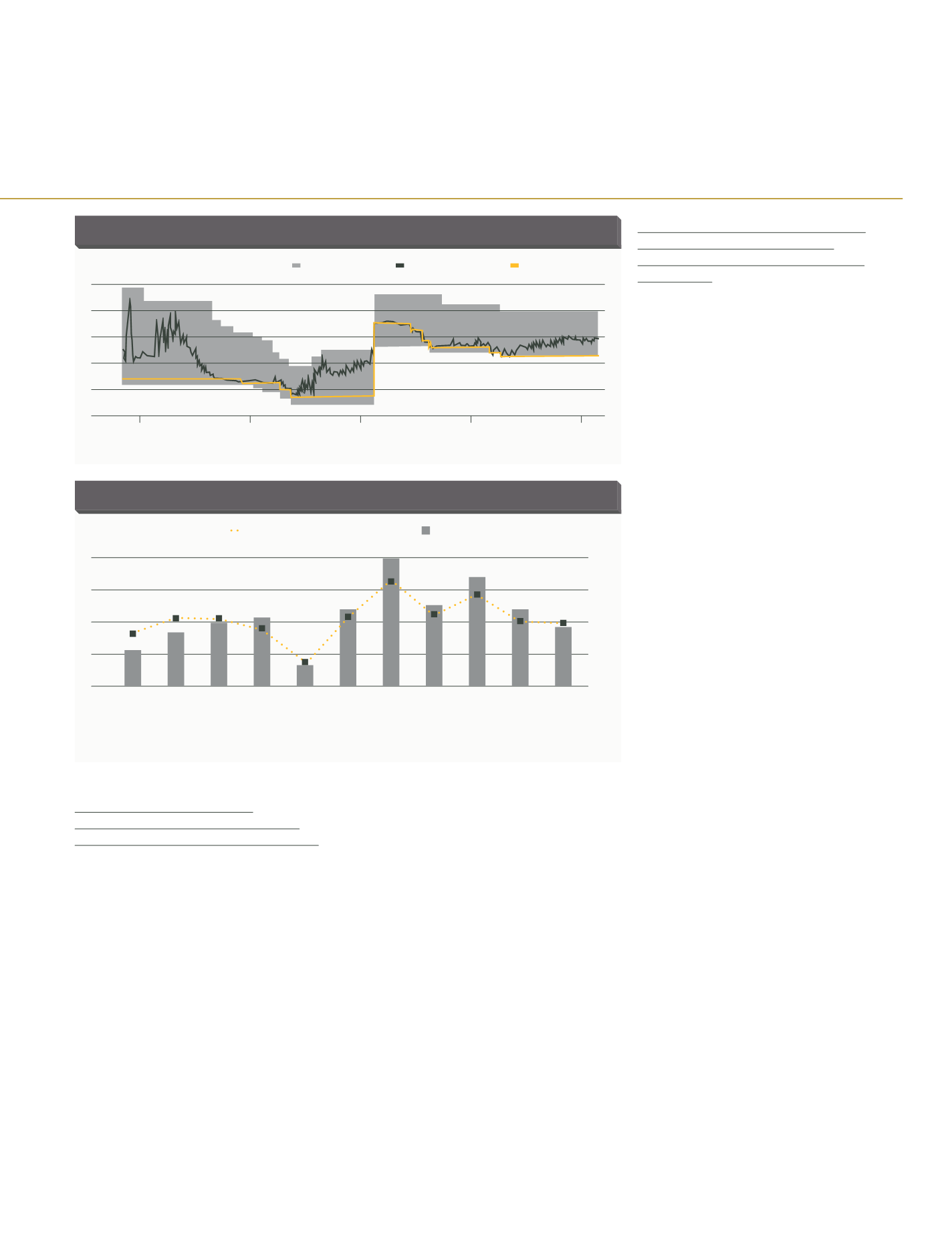
33
PART I: INTRODUCTION
of the current account deficit, while slipping
net service revenues and the outflow of foreign
currency had an adverse impact. The drop in net
service revenues can explained largely by the
reduction in tourist number owing to economic
woes in neighboring countries, while the foreign
currency outflow can be attributed to the spike
in profit transfers.
The sharp drop in energy prices will have a
more limited positive effect on the current
account deficit in the next year due to the
base effect; while the de-escalation of the
tension between Turkey and Russia and the
disappearance of electoral uncertainties could
lead to a surge in domestic consumption, which
could result in a milder improvement in foreign
trade performance in 2016 compared to 2015.
CBT MAINTAINED ITS TIGHT MONETARY
STANCE IN 2015 AND SIGNALED A
POSSIBLE SIMPLIFICATION IN INTEREST
RATE POLICY
Pursuing a policy focused on price stability
as well as financial stability, the Central Bank
of Turkey continued to rely on interest rates
and other instruments in 2015. At its january
Monetary Market Board meeting, Central Bank
of Turkey slashed the policy rate by 50 basis
points to 7.75%, while keeping the upper
and lower limits of the interest rate corridor
unchanged. This reduction of the policy rate can
be explained by the expectation that inflation
would fall due to lower oil and other commodity
prices. At the february meeting of its Monetary
Market Board, Central Bank of Turkey lowered
both the policy rate and the upper and lower
limits of the interest rate corridor: CBT brought
the policy rate down by 25 basis points to 7.5%,
the upper limit of the corridor -the marginal
lending rate- by 50 basis points to 10.75%, and
the lower limit by 25 basis points to 7.25%. On
the whole, the interest rate was brought down
from 8.25% as of year-end 2014 to 7.50% in
mid-February 2015. At the press conference for
the CBT inflation report, CBT Chairman Erdem
Başçı announced that the monetary policy
could be simplified. In august, CBT announced
the road map it will follow in parallel to the
normalization of the global monetary policy,
and announced its first measures towards
monetary policy simplification in this context.
CBT divided these measures into the periods
of pre-normalization and post-normalization,
and suggested that the interest rate corridor
could become more symmetrical and narrower
during normalization. On the other hand, the
expectation that the Fed could raise rates in
2015 had an effect on CBT’s monetary policy.
In the road map it outlined in august, CBT
stated that it would await Fed’s rate rise before
changing its interest rates. Eventually the Fed
raised the policy rate by 25 basis points in
december to the interval of 0.25-0.50%, and
announced that the rate rise would continue in
the coming period.
CURRENT DEFICIT DROPPED TO
USD 34.7 BILLION IN NOVEMBER 2015
DUE TO THE RECOVERY OF FOREIGN TRADE
The current deficit, which stood at USD 46.5
billion in the year 2014 and corresponded
to 5.9% of GDP, fell to USD 34.7 billion as of
November 2015 according to cumulative figures.
The improvement of the current account deficit
in the first 11 months of 2015 was largely due
to the contraction of the foreign trade deficit,
which in turn was related to lower oil prices
bringing down Turkey’s energy import bill.
Furthermore, in another key development, the
contraction of the global trade volume led to
lower Turkish imports. Foreign trade related
developments in the period from January to
November 2015 contributed to the contraction
CURRENT ACCOUNT DEFICIT
80
60
40
20
0
12
10
8
6
4
2
0
2005
2014
2015*
2009
2008
2013
2012
2011
2010
2007
2006
Current Account Deficit (annual, billion USD)
Current Account Deficit (% GDP, right axis)
Source: CBT
*Current Account Deficit November 2015
Current Account Deficit/GDP Q3 data
13
11
9
7
5
3
12/2011
12/2012
12/2013
12/2014
12/2015
Interest Rate Corridor
Average Cost of Funding
One-Week Repo Rate
CBT INTEREST RATES
(%)
Source: CBT


